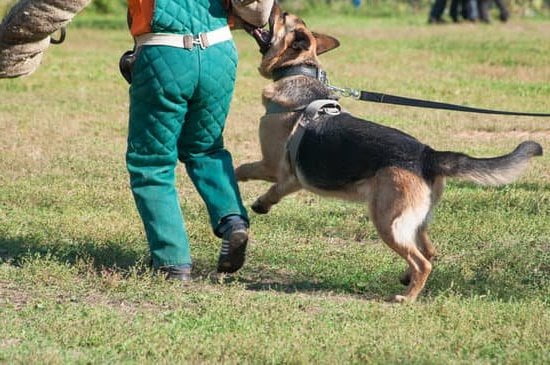Training your dog to play dead is not only an impressive trick, but it can also be a fun and rewarding experience for both you and your furry friend. Imagine the delight on your friends’ faces when they see your dog dramatically drop to the ground as if lifeless with just a simple command. This trick not only showcases your dog’s intelligence and obedience, but it also strengthens the bond between you and your furry companion.
Playing dead is a more advanced trick that requires some foundational obedience training. It serves as an opportunity to challenge your dog’s abilities and engage their problem-solving skills. Additionally, teaching them this trick can provide mental stimulation and prevent boredom, keeping them entertained and happy. Plus, being able to show off this unique skill will surely earn you praise from family, friends, and even strangers.
In order to successfully train your dog to play dead, it is essential first to assess their readiness. Consider factors such as their temperament, obedience level, and physical abilities before embarking on this training journey. This will help ensure that your pup is well-suited for learning this particular trick and prevent any unnecessary frustration or stress during the process.
So get ready to have some fun while training your dog to play dead. In the following sections of this article, we will guide you through the steps needed to teach this trick successfully. From establishing a positive training environment to using positive reinforcement techniques, we will cover all aspects of the process. By following these guidelines and maintaining patience and consistency in your training sessions, you’ll soon witness your beloved canine companion master the art of playing dead.
Assessing your dog’s readiness
Before embarking on the journey of training your dog to play dead, it is crucial to assess their readiness. Not all dogs may be suitable for this trick, as it requires a certain level of obedience, temperament, and physical capability. Assessing your dog’s readiness will help you determine if they are prepared for this type of training and avoid potential frustration or disappointment.
Temperament
Consider your dog’s temperament when deciding whether to train them to play dead. Ideally, your dog should have a calm disposition and be comfortable with various handling techniques. If your dog tends to be anxious or fearful in new situations or around strangers, it may be best to focus on building their confidence before attempting this advanced trick.
Obedience Level
Solid foundational obedience is essential before teaching more complex tricks like playing dead. Ensure that your dog can reliably perform basic commands such as “sit,” “stay,” and “lie down.” These commands serve as the building blocks for teaching them how to play dead. If your dog struggles with these basics, consider reinforcing their obedience skills before moving forward with the training.
Physical Abilities
Take into account your dog’s physical abilities when assessing their readiness for this trick. Some large or senior dogs may have difficulty comfortably lying down or getting up from a down position. It’s important not to push your furry friend beyond what is physically comfortable for them. If you have any concerns about their physical abilities, consult with a veterinarian before starting the training process.
By carefully considering these factors and honestly evaluating your dog’s readiness, you can set realistic expectations and ensure a positive training experience for both you and your pet. Remember that every dog is unique, and if your dog is not quite ready for playing dead, there are plenty of other impressive tricks you can teach them.
Basic obedience training
Basic obedience training plays a crucial role in preparing your dog for more advanced tricks like playing dead. Before diving into teaching your furry friend this impressive trick, it is important to ensure that they have a solid understanding of foundational commands such as “sit,” “stay,” and “lie down.” This section will emphasize the significance of basic obedience training and provide guidance on how to effectively teach these commands to your dog.
Importance of foundational commands
Before moving onto more complex tricks, it is essential to establish a strong foundation of basic obedience commands. Commands like “sit” and “stay” help improve your dog’s impulse control, focus, and overall responsiveness. The command “lie down” is especially crucial for teaching your dog to play dead as it serves as the starting position for this trick.
By mastering these foundational commands, your dog will develop better self-control and be more receptive to learning new skills. It also establishes you as the leader and helps build a strong bond between you and your furry companion.
Teaching foundational commands
When teaching these basic obedience commands, consistency and positive reinforcement are key. Start by focusing on one command at a time and use simple hand signals or verbal cues paired with rewards such as treats or praise. Break down each command into small steps, rewarding your dog for even the slightest progress.
For example, when teaching the “sit” command, hold a treat above your dog’s head while gently pushing their backend down until they naturally sit. As soon as their rear touches the ground, say “sit” and give them the treat accompanied by enthusiastic praise.
Repeat these training sessions multiple times throughout the day in short increments to prevent overexertion or boredom. Gradually phase out the treats but continue rewarding your dog with verbal praise or favorite toys to reinforce their good behavior.
By establishing a solid foundation in basic obedience training through consistent practice and positive reinforcement, you will set the stage for successfully teaching your dog to play dead in the next steps of their training journey.
Establishing a positive training environment
Creating the right environment for training your dog to play dead is crucial for ensuring success. By establishing a positive training environment, you can effectively communicate with your furry friend and minimize distractions that may hinder their progress. Here are some guidelines to help you create a comfortable space for training:
- Choose a quiet and familiar area: Select a location where your dog feels safe and secure, such as a quiet room or your backyard. Familiar surroundings can help your dog relax and focus on the training session.
- Remove potential distractions: Clear the area of any objects or toys that might divert your dog’s attention during the training. This includes removing other pets from the room and turning off TVs or radios to eliminate unnecessary noise.
- Use proper lighting: Adequate lighting is essential for clear communication between you and your dog. Ensure that the training area is well-lit so your dog can easily see visual cues and read your body language.
- Create a designated training space: Consider setting up a designated spot for training sessions, such as using a mat or rug that signals to your dog that it’s time for formal training. This helps establish boundaries and routine, making the learning process more effective.
- Minimize interruptions: Inform family members or housemates about the training schedule to avoid interruptions during sessions. Additionally, consider putting up signs or barriers to prevent unexpected guests from entering the training area.
Remember, creating a positive training environment goes beyond physical aspects-it also involves building trust and providing encouragement. Your attitude, tone of voice, and body language all contribute to how comfortable your dog feels during the process. Stay patient, calm, and optimistic throughout the sessions to foster an atmosphere of positivity and motivation.
Step-by-step training process
Now that you have assessed your dog’s readiness and established a positive training environment, it’s time to dive into the step-by-step training process of teaching your dog to play dead. This trick can be achieved through a series of clear and concise steps, ensuring that your furry friend understands what is expected of them.
The first step is to teach your dog the “lie down” command. Start by asking your dog to sit, and once they are in a sitting position, hold a treat near their nose and slowly lower it towards the ground. As they follow the treat with their head, their body will naturally follow, leading them to lie down. Once they are lying down, reward them with the treat and give plenty of praise.
Next, associate a verbal cue with the “lie down” command. Choose a phrase such as “play dead” or any other word that feels natural for you. Whenever you instruct your dog to lie down using the hand signal or treat lure technique from before, say the verbal cue simultaneously. Repeat this process several times until your dog starts associating the verbal cue with the action of lying down.
Once your dog has mastered lying down on command and recognizes the verbal cue consistently, it’s time to introduce the play dead action. This can be done by gently rolling your dog onto their side while saying the verbal cue “play dead.” Be sure to provide support by placing one hand under their shoulder blades and another hand near their hindquarters. Reward them immediately after they have assumed this position and offer plenty of praise.
Remember, consistency is key throughout each step of this training process. Practice these steps daily in short sessions to reinforce your dog’s understanding of playing dead. Gradually increase the duration of time they remain in the play dead position before rewarding them.
By breaking down this trick into manageable steps and providing consistent positive reinforcement, you can help your furry friend master playing dead in no time.
Using positive reinforcement
Using positive reinforcement techniques is crucial when training your dog to play dead. Positive reinforcement involves rewarding your dog with treats, praise, and rewards to motivate and reinforce their desired behaviors. This method focuses on rewarding what your dog does right rather than punishing them for mistakes. By using positive reinforcement, you can create a positive and enjoyable training experience for both you and your furry friend.
One of the main benefits of using positive reinforcement is that it helps build a strong bond between you and your dog. When they associate training sessions with rewards and positive experiences, they will look forward to learning new tricks and commands. This strengthens the trust and relationship between you, making them more eager to please and cooperate during training.
Another advantage is that positive reinforcement increases the likelihood of success in training. Dogs are more likely to repeat behaviors that are rewarded, so by providing treats or praise when your dog performs the “play dead” command correctly, you are encouraging them to do it again in the future. Consistency with rewards will help solidify the behavior and make it more reliable.
In addition to treats and praise, it’s important to find what motivates your specific dog. While many dogs are food motivated, others may respond better to toys or playtime as a reward. Experimenting with different types of rewards can help keep your dog engaged and excited during training sessions. Remember to use high-value rewards for more challenging behaviors or when introducing new steps in the training process.
Overall, using positive reinforcement techniques not only helps train your dog effectively but also creates a positive atmosphere for learning. Patience, consistency, and rewarding desired behaviors will go a long way in teaching your dog how to play dead successfully.
| Benefits of Using Positive Reinforcement | Explanation |
|---|---|
| Strengthens bond | Positive reinforcement creates a positive and enjoyable training experience, strengthening the bond between you and your dog. |
| Increases likelihood of success | By rewarding desired behaviors, dogs are more likely to repeat them, increasing the chances of success in training. |
| Motivational factor | Finding what motivates your dog (treats, toys, playtime) helps keep them engaged and excited during training sessions. |
Troubleshooting common challenges
During the process of training your dog to play dead, it is common to encounter various challenges that may hinder progress. Understanding and addressing these common difficulties can help ensure a smooth training experience for both you and your furry friend.
One common challenge that dog owners may face is resistance from their dogs. Some dogs may initially be hesitant or reluctant to lay down and pretend to be dead. In such cases, it is important to remain patient and avoid forcing your dog into the position. Instead, try breaking down the training process into smaller steps and gradually build up to the play dead action. Reward and praise your dog for each small progress they make, reinforcing positive behavior.
Distractions can also pose a challenge during training sessions. Dogs have short attention spans, and it can be difficult for them to stay focused in the presence of environmental stimuli or noises. To overcome distractions, choose a quiet and calm environment for your training sessions, free from any potential disturbances. Additionally, consider using treats or toys as rewards during the training process to keep your dog engaged and motivated.
Another obstacle that dog owners may encounter is a lack of progress in their dog’s learning. Each dog learns at their own pace, so it is important not to compare your dog’s progress with others’. If you find that your dog is struggling or not making consistent progress, take a step back and reassess their readiness for the trick. It may be necessary to reinforce foundational commands or revisit basic obedience training before progressing further.
| Challenges | Tips to Overcome |
|---|---|
| Resistance | – Break down the training process into smaller steps
|
| Distractions | – Choose a quiet and calm environment for training
|
| Lack of progress | – Revisit foundational commands and obedience training if necessary
|
Consistency and patience
Consistency and patience are crucial when training your dog to play dead. It’s important to remember that every dog learns at its own pace, and not all dogs will grasp the concept immediately. Some may require more time and repetition before they fully understand what is expected of them. Therefore, it is essential to approach the training process with patience and a willingness to work with your dog until they master the trick.
One key aspect of consistency is ensuring that you use the same cue or command consistently throughout the training sessions. For example, if you choose to use the word “play dead” as the cue for this trick, make sure you stick with it and avoid using alternative phrases or words. Dogs learn through repetition and association, so by consistently using the same verbal cue, you help them understand what behavior is expected from them.
Repetition is also vital in reinforcing what you have taught your dog. Practice the play dead command regularly, gradually increasing the level of difficulty or adding variations to make it more challenging for your furry friend. Each time your dog successfully performs the trick, reward them with treats, praise, or whatever form of positive reinforcement motivates them. This will reinforce their understanding of what behavior gets rewarded and encourages them to continue performing it correctly.
During the training process, it’s essential to remain patient and avoid becoming frustrated if progress seems slow or if your dog experiences setbacks. Dogs are sensitive animals and can pick up on our emotions easily. If they sense frustration or impatience from their owner, it can hinder their ability to learn efficiently.
So take a deep breath, be patient, and remember that Rome wasn’t built in a day. Celebrate small victories along the way and celebrate each step forward – no matter how small.
Taking it further
Once your dog has mastered the play dead command, you can take their training to the next level by exploring additional tricks and advanced training techniques. This not only adds variety to your dog’s repertoire of tricks but also challenges their mental stimulation and physical coordination. Here are some ideas to consider:
- Improvising with cues: Instead of solely relying on a verbal cue, you can start using hand signals or visual cues to command your dog to play dead. This helps them understand and respond to different forms of communication, making their training more versatile.
- Adding props: Introduce props such as fake guns, capes, or hats during the play dead routine to add an element of theatrics. Teaching your dog to hold these props in their mouth or interact with them in a specific way will impress your audience even more and showcase the unique bond between you and your pet.
- Incorporating the trick into a larger routine: Once your dog is confidently playing dead on command, consider incorporating this trick into a larger routine or performance. You can create a mini-sketch where your dog plays different roles like being chased by another person before dramatically falling down and playing dead. This showcases their obedience skills while delighting spectators with an entertaining show.
Remember that patience is key when introducing new tricks or techniques. Break down complex routines into smaller steps and gradually build upon their skills one at a time. Always use positive reinforcement techniques like treats, praise, and rewards to motivate your dog throughout their continued training journey.
Training your dog to play dead is just the beginning of what you can achieve together. With creativity and dedication, you can unlock endless possibilities for fun, impressive tricks, and unforgettable memories with your furry friend.
Conclusion
In conclusion, training your dog to play dead can be a fun and impressive trick that strengthens the bond between you and your furry companion. Before embarking on this training journey, it is important to assess your dog’s readiness by considering their temperament, obedience level, and physical abilities. Building a foundation of basic obedience commands like “sit,” “stay,” and “lie down” is crucial for successfully teaching more advanced tricks like playing dead.
Creating a positive training environment is essential for effective communication with your dog during the training sessions. By establishing a comfortable and distraction-free space, you can ensure that your dog remains focused and receptive to learning.
The step-by-step training process involves teaching your dog to lie down, associating a verbal cue with the command, and gradually introducing the play dead action. Throughout this process, positive reinforcement techniques such as treats, praise, and rewards will motivate your dog and reinforce desired behaviors.
It is important to anticipate and address common challenges that may arise during the training process. Resistance, distractions, or lack of progress can all be overcome with patience, consistency, and troubleshooting tips. Remember that every dog learns at its own pace and persistence is key to achieving success.
Once your dog has mastered the play dead command, consider exploring other tricks or advanced training techniques to further enhance the bond between you both. Improvising with cues or incorporating props can add excitement and variety to your training sessions.
Frequently Asked Questions
How do I teach my dog to play dead?
Teaching a dog to play dead can be a fun and entertaining trick to teach them. The first step is to ensure that your dog has mastered basic commands like sit and lie down. Once your dog is comfortable with these commands, you can begin introducing the “play dead” command. Start by asking your dog to lie down, and then gently guide them onto their side.
You can use treats or rewards to encourage them to stay in this position. Associate the command “play dead” with the action of lying on their side. Be patient and consistent with your training sessions, gradually increasing the duration that they stay in the “playing dead” position. With practice and positive reinforcement, your dog will learn to associate the command with playing dead.
What is the hardest trick to teach your dog?
The hardest trick to teach your dog may vary depending on their individual temperament, breed, and prior training experiences. However, one commonly considered challenging trick is teaching a dog to fetch specific objects by name.
This requires not only teaching them verbal cues but also associating those words with distinct objects they need to identify amongst other items. It involves extensive repetition, reinforcement, and patience as dogs must understand not just the object’s name but also distinguish it from similar ones nearby.
What does a dog have to do when he is told to play dead?
When a dog is told to play dead, they are expected to lay down on their side as if they were lifeless or in a sleep-like state. This trick typically involves the dog lying still without any movement until given another cue or released from the position by their owner.
Advanced versions of this trick may include remaining in this position even when distractions are present or holding it for an extended period of time until they receive further instructions or a release command from their owner. Dogs often learn this behavior through consistent training sessions using positive reinforcement techniques such as treats, praise, and gentle guidance into the desired position while associating the command “play dead” with performing this specific action accurately.

Welcome to the blog! I am a professional dog trainer and have been working with dogs for many years. In this blog, I will be discussing various topics related to dog training, including tips, tricks, and advice. I hope you find this information helpful and informative. Thanks for reading!





